LIGHTER, MORE ECONOMICAL, FASTER:
World debut at the Nürburgring
Based on the new 911 GT3 RS production sports car, Porsche has designed a customer sport race car for GT3 category racing around the world: the 911 GT3 R.
In developing the 500 hp-plus (368 kW) racing ‘nine-eleven’, special attention was paid to its lightweight design, enhanced aerodynamic efficiency, reduced consumption, improved handling, further optimised safety as well as lowering service and spare parts costs.
Adapted from its production sibling, the 911 GT3 R features the distinctive double-bubble roof, and the wheelbase which has been lengthened by 8.3 centimetres compared to the previous generation. This ensures a more balanced weight distribution and more predictable handling particularly in fast corners in comparison to the previous GT3 R.
By applying systematic lightweight solutions for the body, add-on parts, and suspension, Porsche Motorsport engineers significantly optimised the centre of gravity of the GT3 R compared to the predecessor. The lightweight body design of the 911 GT3 RS production sports car featuring intelligent aluminium-steel composite construction has proven to be the ideal basis for the race car. The roof, front cover and fairing, wheel arches, doors, side and tail sections as well as the rear cover are made of particularly light carbon-fibre composite material (CFRP). All windows – and for the first time even the windscreen – comprise of polycarbonate.
Powering the new 911 GT3 R is a cutting-edge 4.0-litre flat-six unit which is largely identical to the high-performance production engine of the road-legal 911 GT3 RS.
Direct petrol injection which operates at pressures up to 200 bar, as well as variable valve timing technology, ensures a particularly efficient use of fuel. Moreover, the normally-aspirated engine offers significantly better driveability and a broader usable rev range.
Power from the rear-mounted engine is transferred to the 310 mm diameter rear wheels via a Porsche sequential six-speed constant-mesh gearbox. As in 911 GT road cars, the driver changes gears via shift paddles conveniently positioned on the steering wheel.
The aerodynamics of the 911 GT3 R also follows the example of the road car. The distinctive wheel arch air vents on the front fairings increase downforce at the front axle. Measuring two metres in width by 40 cm in depth, the rear wing lends aerodynamic balance. From its 911 RSR big brother, the GT3 R has adopted the concept of the centrally-positioned radiator. By eliminating the side radiators, the position of the centre of gravity was improved, the radiator is better protected against collision damage, and the venting of hot air through louvres in the front cover was enhanced.
The brake system of the 911 GT3 R also underwent further modifications and, thanks to increased stiffness and more precise control of the ABS anti-lock brakes, is even better suited to long distance racing. At the front axle, six-piston aluminium monobloc racing brake callipers combined with ventilated and grooved steel brake discs with a diameter of 380 millimetres ensure outstanding braking performances. Fitted at the rear axle are four-piston callipers and discs measuring 372 millimetres.
Another development focus was on the safety features of the GT3 R. The capacity of the further-reinforced FT3 safety fuel cell was increased by 12 litres to now hold 120 litres, with the tank now featuring a fuel cut-off safety valve. The doors and the side windows can be removed, and the escape hatch in the roof is now larger. In the event of an accident, the new racing bucket seat offers pilots even better protection.
The new Porsche 911 GT3 R can be ordered immediately for 429,000 Euro plus country-specific VAT and will be delivered from December 2015.
Technical description Porsche 911 GT3 R (Type 991)
Single-seat customer race car based on the Porsche 911 GT3 RS
Engine
- Water-cooled six-cylinder boxer engine (rear mounted)
- 4,000 cm3; stroke 81.5 mm; bore 102 mm
- Output: over 368 kW (500 hp) subject to FIA Balance of Performance (air restrictor)
- Four-valve technology
- Direct fuel injection
- Dry sump lubrication
Transmission
- Porsche sequential six-speed constant-mesh gearbox
- Mechanical slip differential
- Pneumatic gear-shift activation (paddle shift)
Bodyshell
- Lightweight body featuring intelligent aluminium-steel composite design
- Integrated (welded) roll-cage according to FIA Appendix J
- Removable escape hatch in roof
- Lightweight exterior design
- CFRP doors, rear cover, rear wing, wheel arches, front and rear fairing
- Polycarbonate glazing
- Removable polycarbonate door windows
- FT3 safety fuel cell, approx. 120 litres, with fuel cut off safety valve in accordance with FIA regulations
- Air jack system (four jacks)
Suspension
- Front axle McPherson strut, adjustable in height, camber and toe
- Wheel hubs with centre-lock wheel nuts
- Adjustable anti-roll bar blades (left and right)
- Power-assisted steering with electro-hydraulic pressure feed
Rear axle
- Multi-link independent rear suspension, adjustable in height, camber, toe
- Wheel hubs with centre-lock wheel nuts
- Adjustable anti-roll bar blades (left and right)
Brake system
Two separate brake circuits for front and rear axles; adjustable by driver via brake balance bar system
Front axle
- Six-piston aluminium monobloc racing brake calliper
- Ventilated and grooved steel brake disc, diameter 380 mm, aluminium disc bell
Rear axle
- Four-piston aluminium monobloc racing brake calliper
- Ventilated and grooved steel brake disc, diameter 372 mm, aluminium disc bell
Wheels/tyres
- One-piece BBS alloy wheels according to Porsche specification and design
12.0J x 18 offset 17, tyre dimension: 300/650-18 front
13J x 18 offset 37.5, tyre dimension: 310/710-18 rear
Electrics
- COSWORTH power module IPS32
- Race ABS
- Traction control
Weight/dimensions
- Total weight: ca. 1,220 kg (subject to Balance of Performance)
- Overall length: 4,604 mm
- Overall width front axle: 1,975 mm
- Overall width rear axle: 2,002 mm
- Wheelbase: 2,463 mm
Car price – 429,000 Euros plus country-specific VAT
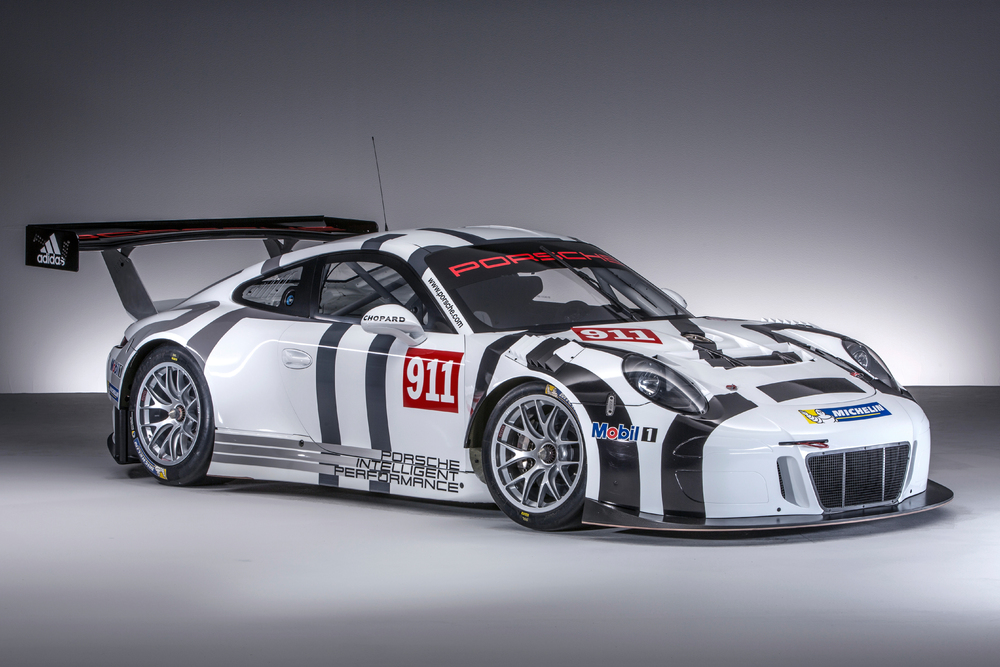
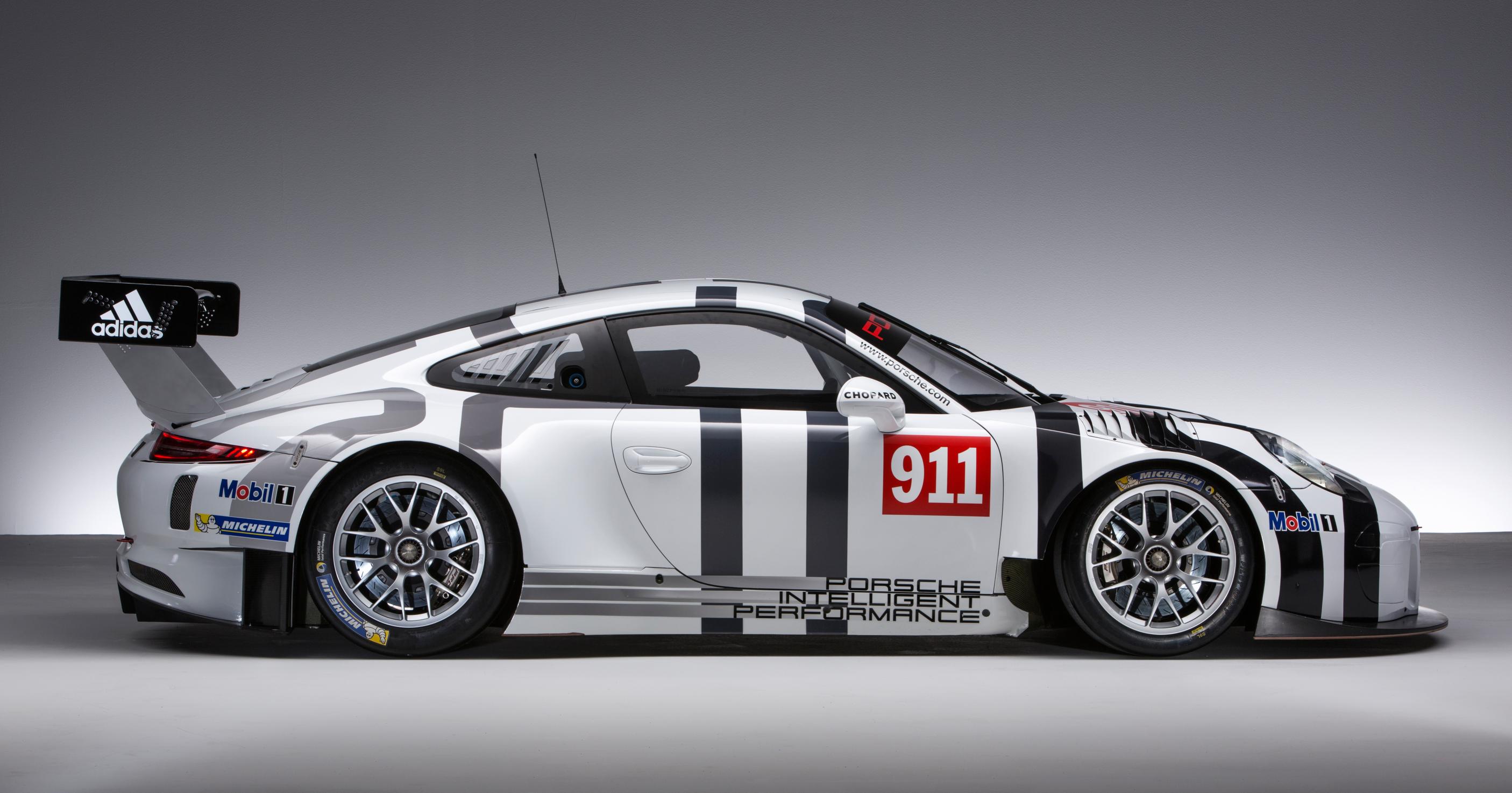
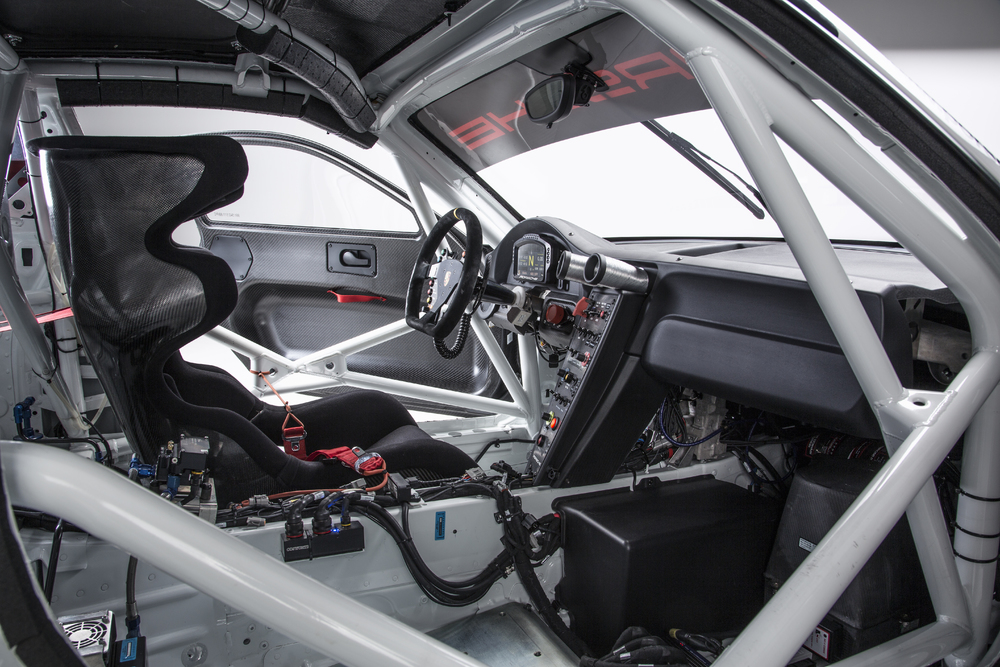
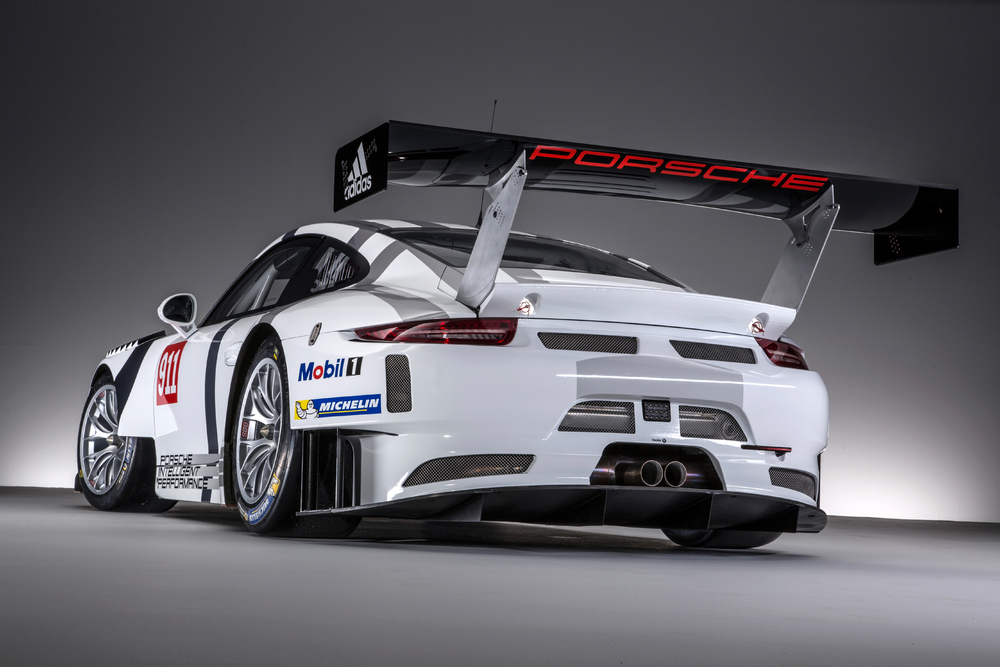
Porsche can claim more than 30,000 race victories in almost every motor sports series worldwide, and while many of these successes have been achieved with immensely powerful specialist race cars like the evocative 917 and 956, the iconic 911 sports coupe is the bedrock on which the peerless racing reputation of the Stuttgart marque has been built.
The 911 demonstrates perfectly the Porsche philosophy of not only building sports cars in order to win races, but also to gain development know-how that can be incorporated into the evolution of its road cars. Successive generations of the rear-engined 911 have been honed on the race circuit since its debut in 1963, with customers benefitting from continuous improvements in key dynamic areas such as engine performance, braking and aerodynamics.
Porsche is the world’s largest manufacturer of racing cars; the Porsche 911 GT3 Cup race car competes in the Mobil1 Supercup, the world’s fastest international one-make Championship, which supports Formula One Grands Prix. The 911 GT3 Cup also entertains spectators around the world racing in the many domestic Carrera Cup Championships in Germany, Asia, France, Italy, Japan, Scandinavia and Great Britain. For many years, the GT3 R has been the first step for drivers moving up to GT racing, while the all-new 911 RSR is the standard-bearer for the Porsche Works teams in international blue riband events like Daytona and the Le Mans 24 Hours.
With 16 overall victories, Porsche is the most successful manufacturer in Le Mans history. In 2014, Porsche returned to Le Mans and the World Endurance Championship (WEC) with the factory-run 919 Hybrid sports prototype race car in the top LMP1 category, and scored its first outright victory in its debut WEC season in the final race in Brazil.
INSPIRED BY MOTORSPORT: RECORDING AND ANALYSIS OF DRIVING DATA ON TRACKS
Exclusive for Porsche GT sports cars; Porsche Track Precision app
GT sports cars from Porsche demonstrate clear inspiration from the world of motorsport, and this track breeding is enthusiastically embraced by customers. Four out of five Porsche GT road cars ever built have been driven on the track. One in three enthusiastic drivers take to the track in the first year to test the sporting limits of their vehicle and their own abilities. Porsche has developed the Track Precision app especially for such drivers.
The Porsche Track Precision app is part of a special Sport Chrono Package, which is available as an exclusive £1,085 option just for Cayman GT4, 911 GT3 and 911 GT3 RS models. It also includes the pre-fitting for connecting a lap trigger, which can be ordered as an option from Porsche Tequipment for £816.88. This allows lap times to be measured even more precisely than using the GPS signal.
Customers can download the free smartphone app for Android or iPhone from iTunes or Google Play. It allows the driver to perform a detailed and objective analysis of their lap times and driving style using synchronised data and video recordings. To do so, it utilises precise vehicle data from an auxiliary control unit in the vehicle as well as the smartphone’s high-resolution camera and GPS signals.
The Porsche Track Precision app offers a unique range of functions, both while driving as well as for subsequent analysis. Before setting off, the driver simply has to select the desired track. This can be done either before or at the track. There are already about 60 international race tracks available in digitised form so far. Additional tracks can be conveniently added in a map editor beforehand or can be created when you drive the first lap in the car. To ensure high video quality, the driver should then affix the smartphone in a secure mount on the windscreen. As soon as he passes the start line, the system automatically begins to record using the GPS data. The data can be saved with the tap of a finger after passing the finishing line when the car leaves the track.
On the track, dynamic performance is also visualised in the form of traction, steering response, and longitudinal and lateral acceleration. In addition to the sector and lap times, the display also shows precise position of deviations compared to a reference lap, which can either be driven previously or pre-selected. The driver can also always see the differences in time, distance and speed at a glance on an animated ‘ghost car’, with two vehicles used to indicate the current difference in comparison to the reference lap on the display: the car in front is the faster.
Because all of the data and the video recording are saved in the smartphone, it is possible to produce a video analysis immediately after the vehicle is stopped, allowing you to improve your performance in the very next lap.
A unique feature is the display showing the specific, animated 911 GT3 or Cayman GT4 cockpit with a steering wheel that is synchronised with the video and simulated accelerator and brake pedals. Almost all of the driving data are displayed, such as engine speed, gear position, speed, steering angle, accelerator and brake pedal position, lateral and longitudinal acceleration (G-force) as well as traction and oversteer or understeer.
The ghost car animation of distance and time deviations in comparison to a freely selectable reference is also displayed. On top of that, a number of detailed graphical analyses can be selected. For example, it is possible to display the driving line and to switch to detailed display screens, or to a video of a precise position anywhere on the track.
Porsche has developed a special control unit for data collection and transmission, which acquires all of the relevant information from the on-board network ten times per second and encodes it with a high-precision time stamp. This ensures that no inaccuracies arise during transmission to the smartphone via WiFi.
The driver can use the smartphone menu to select whether to use the GPS signals from his mobile phone, the car, or from an external, high-precision GPS receiver.
For the high-precision measurement of the lap time, the Sport Chrono Package for GT sports cars also includes an interface to a ‘lap trigger’ as used in motorsport, which communicates with the Track Precision app. It is based on the light barrier principle, with a transmitter next to the start/finish line which triggers the receiver in the rear side window when the car passes. The lap trigger is available from Porsche Tequipment.
GT customers who did not order the Sport Chrono Package when buying a new current-generation Cayman GT4, 911 GT3 RS or 911 GT3 can have the Track Precision app retro-fitted by Porsche Tequipment at a Porsche Centre for £1,148.77.

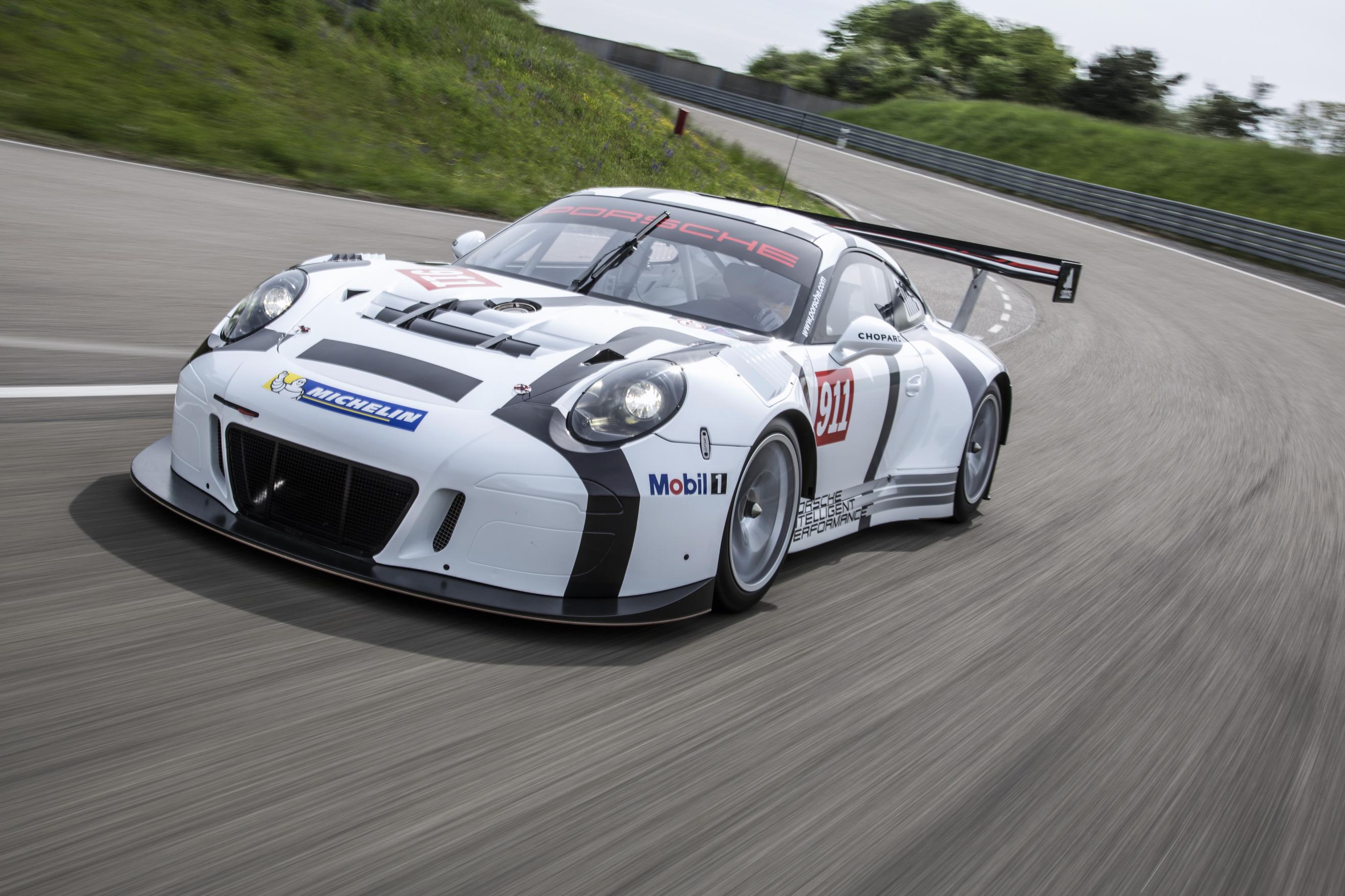
You must be logged in to post a comment.